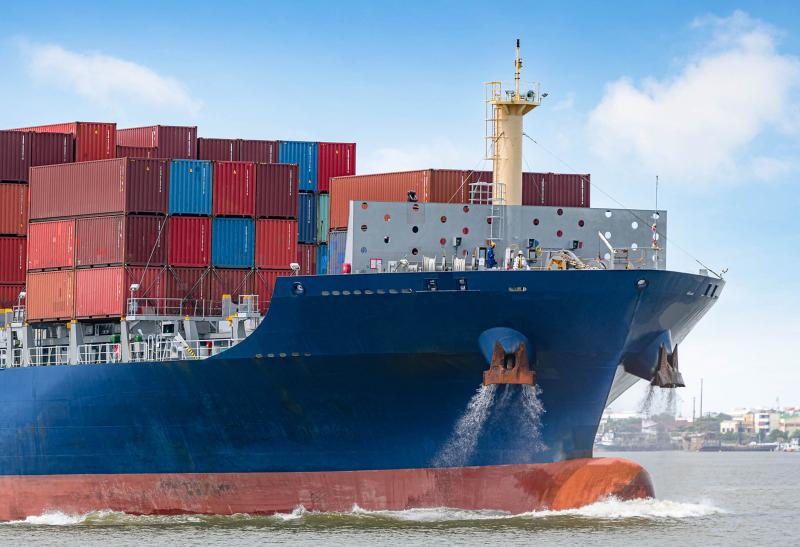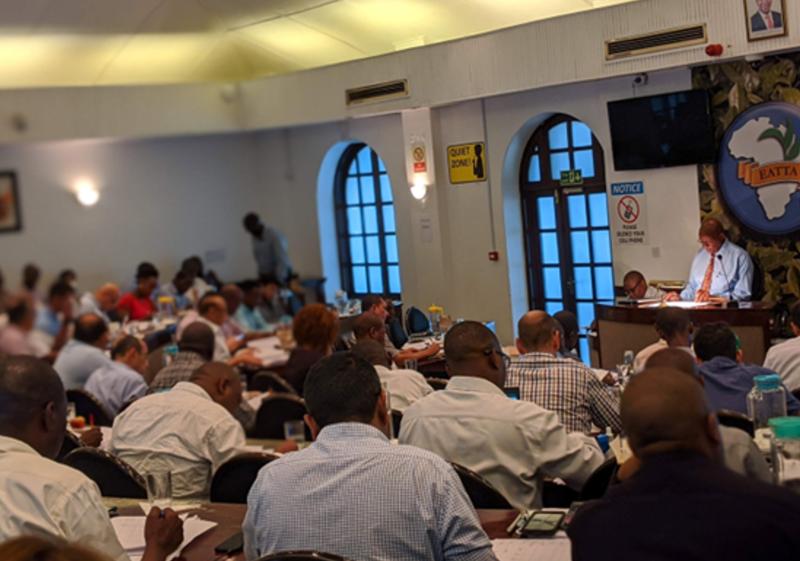Tea and the Supply Chain: Bottlenecks, Current Market Mechanism Issues and Future Opportunity
Editor’s Note: Click here to read Part One of this series on tea and the supply chain, and click here to read Part Two of the series.
Having planned an opening for the third part of this World Tea News supply chain series, the European Union (EU) took my thunder by proclaiming that under the ETS (Emissions Trading System) – a vehicle for the taxation of certain carbon emitting industries – are to add shipping to their scope of responsibilities.
This development will lead to a tax of 100 percent of emissions within EU waters and 50 percent for international route segments (bound to and from the EU) until 2025, when all route segments will be taxed at 100 percent.
Aimed at accelerating the decarbonization of the industry, this new development should be applauded by all. However, it comes at a price for all ship-borne trades – including tea – so, the tea industry needs to accept this three-year challenge, focus efforts on streamlining tea’s supply chain, and be thankful for the “kick” up the backside, so to speak.
Indeed, the tea industry should not be complacent, just because the sums are not huge at this time – the intent here is clear.
So, what evasive measures can the tea industry take?

Simple Tactics to Deploy:
- Consider consolidating LCL freight (less than a container load) with other freight to maximize efficient container loading
- Evaluate changing packaging to increase density of shipments to maximize loadings
- Adjust route selection and base it on lowest transit miles and fewer trans-shipments
And… More Drastic Tactics to Deploy:
- Invigorate efforts to build and/or protect tea-consuming habits close to tea growing regions
- Move towards a domestic consumer market transformation with consumer-packaged goods (CPG); Ship high density bulk, only to volumize close to consumption market
- Where not possible, consider shipping the work in progress (WIP) production (such as blended and/or flavored teas) for final packaging in the consuming market
- Change formats to increase density of the shipments
Bottlenecks
From a more immediate standpoint, what’s apparent is the indigestion in consuming markets. An impact on retailer proactivity, in shoring up stocks (avoiding potential stock outs due to congestion issues and potential labor disruptions (reported on in earlier World Tea News supply chain articles), coupled with a dramatic slowdown in sales, driven primarily by inflation.
With most tea retailers reporting increase in sales of five to 10 percent – yet, increased inventory levels of 25 to 40 percent – we are now into a period of stock and cash management. This will reduce demand on the entire supply chain at a time when capacities are ramping up.
In short, the bottleneck is being relaxed and this should help alleviate short term issues, but other more systemic issues are at play in our industry.
Current Market Mechanism Issues
Longer term and away from generic freighting, a look at how tea is traded offers up opportunities, too.
Consider the difference between direct sales and auction. The former enabling tea to be sold prior to production and for this to be produced to specification (through dialogue and an approval sample process) and then, optimally, stuffed into container loads at the factory and trucked directly to a steamer.
Meanwhile, auction teas have to be produced and trucked to a certified godown/warehouse for sampling, to brokers and potential buyers, weeks before auction and without discourse on suitability, other than valuation. If lucky, the tea sells or, if not, then one of these options:
- The tea is taken out for private sale
- It’s reprinted in a future sale

All the while, the tea is losing freshness and character, deteriorating further while awaiting purchase. Overly dramatic? No, the current situation in Mombasa auctions sees some teas with, can I say, “vintage status” (2021 production) coming up as reprints for the nth time and all the risk is on the farmers and producers’ shoulders, who finance current production without a guarantee of income on that already produced.
The harsh reality of tea and other commodity industries is that the biggest risk is often born by those with the smallest share of the margin cake and, extraordinarily, there is no mechanism for cost realization within this sale mechanism. Hence, our tea packers and retailers rely on certificates to prove their CSR (Corporate Social Responsibility) credentials, with respect to tea products, without any obligation to make those in the supply chain whole. Extraordinary!
Future Opportunity
It is no wonder, then, that so many tea producers investigate vertical integration, to release the shackles of the commodity risk that they are bound by and to be able to express the true value and impacts of their products to retailers and consumers.
Herein lies the quandary. The pragmatic transport options, above, is at loggerheads with the opportunity to vertical integrate, without considering new hybrid models. A partnership between producers and packers (in consuming markets), where bulk product is consigned for an agreeable margin distribution and guarantee of a sustainable price (all costs considered), is one option.
If taken seriously, a DLT (distributed ledger technology) smart contract could be engaged to manage the process and build trust and real value for all.
If this raises a gentle dismissive guffaw from trade incumbents, I say, “Dust off the cobwebs and look out of the window.” Consumers are educating themselves about where their food comes from and its impacts on the globe, and this will shape their habits more than your promise of great quality. So, the EU ETS has done the tea industry a favor, based on this World Tea News analysis. It is going to force the tea industry to think about how it trades and how it moves tea product around the globe. Indeed, it is not the largest part, but it will be a factor in where the industry grows and where it buys tea from.
The opportunity for the tea industry is to take this “event” as the premature lighting of a blue touch paper – which will inevitably be ignited at some time in the future – and get ahead of it, avoiding some embarrassing burns and remaining competitive and relevant to both ends of the supply chain.
Watch for more in-depth tea supply chain articles at World Tea News in the coming months, as well as in the weekly World Tea News eNewsletter. If you’re not already a subscriber to the World Tea News weekly eNews, be sure to register for your FREE subscription at this site.
John Snell, NMTeaB Consultancy, has spent 40 years in the tea industry, working with everyone from global brand leaders to traders and private label packers, in management of procurement, development and sustainability. His day job is now consulting for those that “do not want to spend 35 years trying,” in his words, and work ranges from product development and GTM strategies to international development projects. Snell has spent the last 27 years in North America, where he has been an active member of the trade, sitting on the board of the Tea Association of the USA and as a regular speaker at North American Tea Conferences. He sits on the Canadian Tea Association’s grading panel and is a regular contributor to World Tea News. If you ask him what “floats his boat” (a relevant analogy given his earlier days in the Royal Navy), it is always about empowering others to arrive at responsibly derived beverage solutions that deliver outstanding results for the companies he works for. He is clear that sustainably sourced and produced products are more profitable. To learn more, visit nmteab.com.
Plan to Attend or Participate in the
World Tea Conference + Expo, March 27-29, 2023
To learn about other key developments, trends, issues, hot topics and products within the global tea community, plan to attend the World Tea Conference + Expo, March 27-29, 2023 in Las Vegas, co-located with Bar & Restaurant Expo. Visit WorldTeaExpo.com.
To book your sponsorship or exhibit space at the World Tea Conference + Expo, or to enquire about advertising and sponsorship opportunities at World Tea News, contact:
Ellainy Karaboitis-Christopoulos
Business Development Manager, Questex
Phone: +1-212-895-8493
Email: [email protected]
Also, be sure to stay connected with the World Tea Conference + Expo on social media for details and insights about the event. Follow us on Twitter, Facebook, Instagram and LinkedIn.
